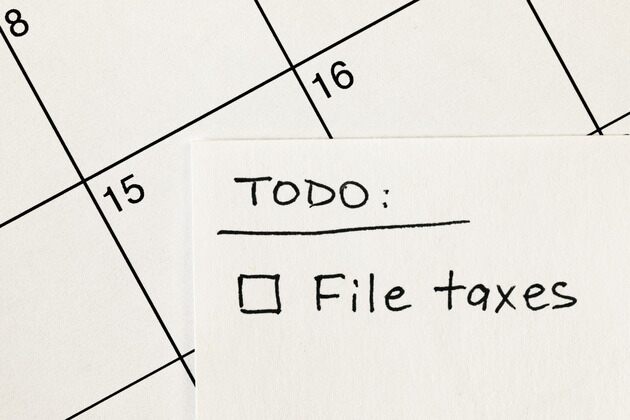The Independent Contractor 1099 Form: Everything You Need to Know
As an independent contractor, you wear many hats, from business owner to marketer. But tax expert might not be in your collection.
While taxes are the less glamorous side of being a contractor, understanding your obligations is one of the most important parts of the job. And with the right knowledge, you can simplify your filing for a smooth, stress-free tax season.
Here’s how to file taxes as an independent contractor. Learn about deductions, deadlines, and best practices for streamlining the process.
RELATED ARTICLE — What Is a Service Business?
What Is an Independent Contractor?
An independent contractor is a self-employed person who provides services to clients. As a contractor, you typically have more control over your work than employees. You decide when, where, and how to complete projects.
Independent contractors work in a variety of industries, including:
- Construction and home services
- Consulting and professional services
- Creative fields, like writing, design, and photography
- Trades, like carpentry and plumbing
- Technology, like freelance software development
As an independent contractor, you choose your own business structure. Most operate as sole proprietorships, which is the simplest structure. A sole proprietorship is a business owned and run by one person.
RELATED ARTICLE — How To Make an Estimate for Construction (in 7 Steps)
Taxes for Contractors Versus Regular Employees: Main Differences

You may already know that contractors receive 1099s instead of the W-2s traditional employees get. So, do 1099 employees pay taxes in the same way employees do? Not quite.
Here are the most important differences:
Tax Forms
Like regular employees, independent contractors must file Form 1040 (the U.S. Individual Income Tax Return) at the end of the tax year. But they must also attach a Schedule C (Profit or Loss from Business). This document reports business income and expenses.
You should also receive a 1099-NEC Form from each client who paid you $600 or more during the year. Clients send copies of these forms to the IRS, so you don’t need to file them yourself. They just help you see how much you were paid to accurately report income on your tax return.
Tax Payments
Employers withhold taxes from regular employees’ paychecks. The employer then sends the taxes to the IRS so their staff doesn’t have to. But as an independent contractor, you pay and estimate your own taxes quarterly with Form 1040-ES.
So, how much do independent contractors pay in taxes? While the main factor is your income level, self-employment taxes also play a role in how much you pay. Unlike traditional employees, independent contractors pay their own self-employment taxes out of the money they earn. These include Social Security and Medicare taxes, which are taxed at 12.4% and 2.9%, respectively. You use Schedule SE to calculate your total self-employment tax.
Deductions
Most regular employees can’t claim business expenses. But independent contractors can deduct them on their Schedule C to lower their taxable income. These expenses could include business travel, office supplies, and rent.
Recordkeeping
As an independent contractor responsible for your own taxes, you have to keep detailed records of your income and expenses. This helps you accurately report your income to the IRS. It also tracks the expenses that might count as deductions.
Traditional employees don’t have to keep records as closely. Instead, they get a W-2 form from their employer that summarizes their income and withholdings for the year.
RELATED ARTICLE — The Independent Contractor 1099 Form: Everything You Need to Know
Understanding How Independent Contractors Pay Taxes: Step-By-Step
As an independent contractor, you have to calculate, report, and pay your own taxes. Here’s a step-by-step guide to getting it done:
1. Make Quarterly Payments
Make quarterly estimated tax payments throughout the year so you don’t have to pay so much later. Use Form 1040-ES to double-check your estimates. You can pay online or by mail.
2. Prepare Tax Forms
When it’s time to file your annual tax return, gather your 1099 forms from all your clients. Also compile your personal records of business income and expenses so you know what to claim and deduct.
Use this information to fill out your Schedule C to calculate your net profit or loss from your business. You also need to complete your Schedule SE to calculate your self-employment taxes.
3. File Your Taxes
Complete Form 1040 using the information from your Schedule C and Schedule SE. Double-check your forms for accuracy and completeness, and then submit them to the IRS online or by mail.
4. Wait for Confirmation and Final Steps
After filing, you’ll receive a confirmation from the IRS. If you owe taxes, you need to pay them by the deadline to avoid penalties and interest. If you’re due a refund, the IRS processes your return and sends you the refund by direct deposit or mail.
The steps for filing your taxes with your state may differ slightly. Do your research to avoid mistakes and missed deadlines.
RELATED ARTICLE — How To Issue a 1099 Form: Step-By-Step Guide
Independent Contractor Tax Deadlines

Staying on top of your tax deadlines helps you avoid penalties and interest. Here are the key deadlines you need to know:
Quarterly Estimated Taxes
Your quarterly estimated tax payments cover income earned during each quarter. They’re due on:
- April 15
- June 15
- September 15
- January 15 of the following year
Note that if any of these due dates fall on a weekend or holiday, payments are due on the following business day.
Annual Income Tax Return
Just like employees, your personal income tax return is due on April 15 each year. If you need more time to file, request an automatic six-month extension with Form 4868. This extension only applies to filing your return, not paying the taxes you owe. You still have to pay an estimate of your taxes by the regular deadline.
5 Tax Deductions for Independent Contractors
Independent contractors can use tax deductions to reduce the amount owed. These are any expenses necessary for your business activities.
Here are some common tax deductions for independent contractors:
- Home Office Expenses. If you use part of your home regularly and exclusively for business, the IRS considers it a home office. This means you can deduct part of your rent, mortgage interest, and utilities. You can also claim the cost of office supplies like computers and software necessary for running your business.
- Advertising and Marketing Costs. Expenses related to promotion, like business cards, flyers, and online ads, are tax-deductible.
- Health Insurance Premiums. If you’re self-employed and pay for your own health insurance, you may be able to deduct your premiums.
- Travel Expenses. If you travel for business, you can deduct expenses like airfare, hotels, and 50% of your meal costs.
- Education and Training Costs. These include expenses for courses, workshops, and books that help you maintain or improve your business skills.
FROM ONE OF OUR PARTNERS — Small Business Owner? You Can’t Afford To Ignore These Financial Tips
4 Tips for Filing Your Independent Contractor Taxes

With the right strategies and tools, you can streamline your taxes and meet all of your obligations. Here are some tips to help you file taxes like a pro:
- Track Expenses and Payments. Keep detailed records of all your business income and expenses throughout the year. This includes invoices, receipts, and bank statements. Tracking these reduces stress because you never have to scramble to find information. It also comes in handy during an audit. Use a spreadsheet, accounting software, or a dedicated app to simplify the process.
- Set Aside Funds. Set aside part of your earnings for your estimated tax payments and potential year-end tax bill. This makes sure you’re never short on funds when you need to make a payment. To know how much to save, estimate how much you’ll make and check with the IRS’ general percentages.
- Use Tax Software. Consider using tax preparation software for self-employed workers and small businesses. These programs guide you through the filing process to help you find deductions and avoid mistakes.
- Stay Informed: Tax laws and regulations can change from year to year. Keep an eye on IRS publications to see updates that may affect your tax situation.
FROM ONE OF OUR PARTNERS — Better Bookkeeping for Home Services Companies
Automate Bookkeeping by Syncing Your Joist and QuickBooks Online Accounts
Being your own boss comes with some extra responsibilities—like handling your own taxes. But by digitizing your books with Joist, you can make tax season a breeze and focus on the work.
Manage, organize, and automate your bookkeeping with Joist’s QuickBooks Online sync. You’ll spend less time keeping records and more time delighting customers, all while keeping your books organized.